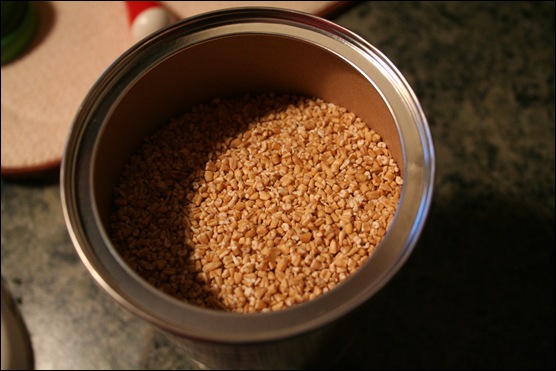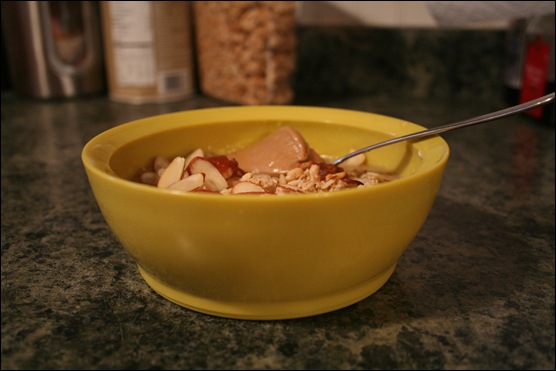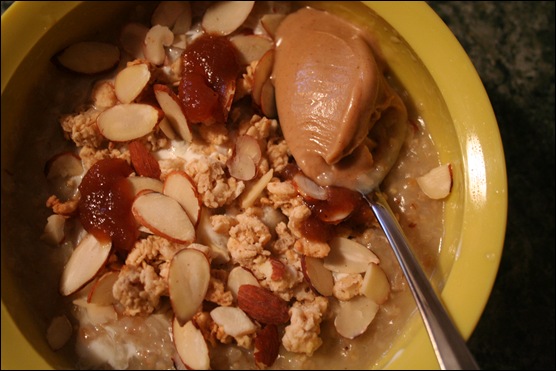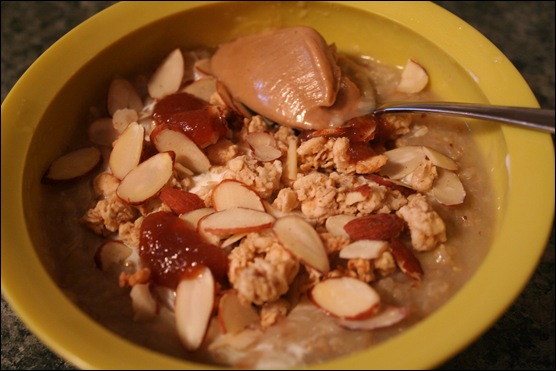I read this article on Active.com and thought it was very interesting.
Some of the highlights from the article:
“The lighter you are, the less weight you have to lift off the ground with each stride and the more economically you can run. It’s no accident that the men’s marathon world record holder, Ethiopia’s Haile Gebrselassie, weighs 113 pounds!
One study on the effects of weight on running performance found that the addition of 5 pounds of weight to the body reduced running performance in a 12-minute time trial by 5 percent. Runners routinely lose 5 pounds or more in the process of training and dialing in their nutrition for races. This makes body weight one of the most influential and controllable factors in running performance.
Each runner has his or her own ideal racing weight. In almost every case, a runner’s optimal racing weight is the lowest weight he or she can attain without overtraining or consuming too little energy to support optimal running performance and recovery. Individual racing weights are influenced by a variety of factors, including height and frame type.
What’s true of all runners at their individual racing weights is that they have low body fat levels. Your muscle and bone mass will not change much in the process of training and dialing in your nutrition for a race, but the amount of fat on your body will probably decrease.
While all runners are very lean at their racing weight, not all runners are equally lean. That’s because body fat levels are influenced by several factors that we have no control over, including age, gender, and genes.
Some runners are fortunate to be born not only naturally light, but also with a natural ability to healthily attain a very low body fat percentage.
As I have hinted above, it is possible to become too lean–that is, to have a body fat percentage that is too low. That’s why your racing weight is defined as the weight that is associated with the lowest body fat percentage you can attain without overtraining or under-nourishing your body.
Thus, the surest way to determine your racing weight and optimal body fat percentage is to get in the best shape of your life and then weigh yourself and measure your body composition on the day of a big race.
Along the way, you can generate better and better estimates of your racing weight and optimal body fat percentage by regularly tracking these measurements against performance. For example, every four weeks run a 10K fitness test (at 95 percent effort) and record your time. Note your weight and body fat percentage on the same day. As you get fitter you will observe trends that will enable you to roughly predict your racing weight and optimal body fat percentage.
As you pursue your racing weight, always remember that anything that aids your performance will also make you leaner. Training smart and progressively will make you faster and leaner. Fueling your body well for running and recovery will make you faster and leaner. Prioritize performance and the rest will follow.â€
What are your thoughts??
***
I have been a little out of sorts lately with my marathon training and eating. My body hasn’t felt quite the same. I have decided to really watch what is going in. I have been a little out of control with my snacking lately. I really want to start building more lean muscle and get into the best shape of my life! So how will I do this? Keeping up with my marathon training plan and adding in more weights. I am going to write up a weight plan tonight.
***
BREAKFAST
I have never tried Irish Cut Steel Oats and I finally picked some up at F&E. They look so different then rolled oats.
The process of making them took way longer then rolled oats. My friend Amy told me the best way to cook them in a crock pot over night, I am going to try that! I also should try to pre soak them, I hear that helps.
I used my new CaliBowl to eat them in 🙂
I love the lip on the bowl, it really helps me get every last drop of oats!
TOPPINGS
- Vanilla Almond Granola
- Sliced Almonds
- Dollop of Greek Yogurt
- 1/2 banana mixed in while cooking
- Drizzle of Apple Butter
- Spoonful of Maranatha Peanut Butter
Overall the oats were pretty good. The texture threw me off a bit, they were more chewier and nuttier then rolled oats. I think I prefer the regular rolled oats, but it was a nice change.
Health Benefit: Steel-cut oats may have a lower glycemic index than instant oatmeal (42 vs. 66, respectively), causing a lesser spike in insulin levels when consumed. The cause of this is undetermined, but believed to be a higher proportion of complex carbohydrate
Question: Do you prefer rolled or steel cut oats?




Comments
1,213 responses to “What Is Your Ideal Racing Weight?”